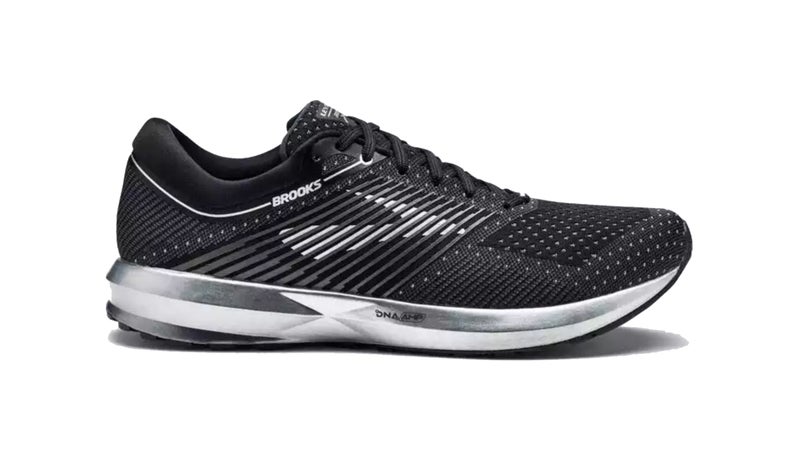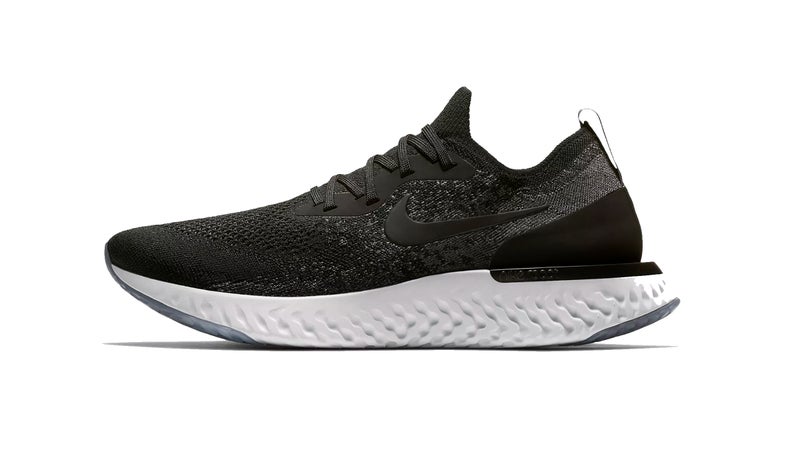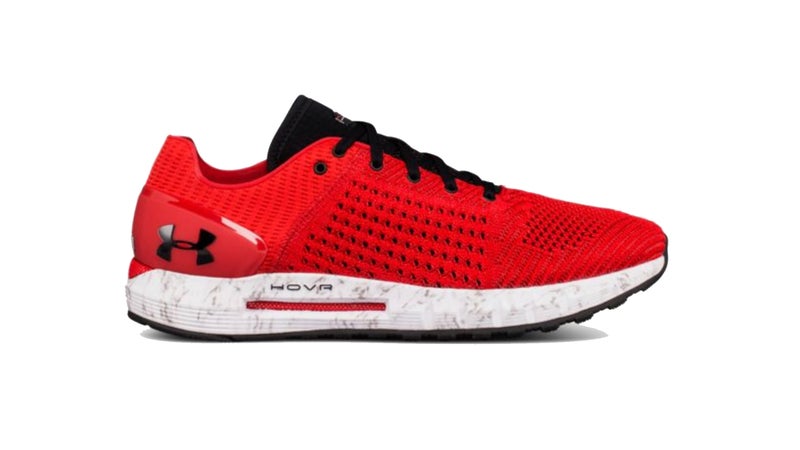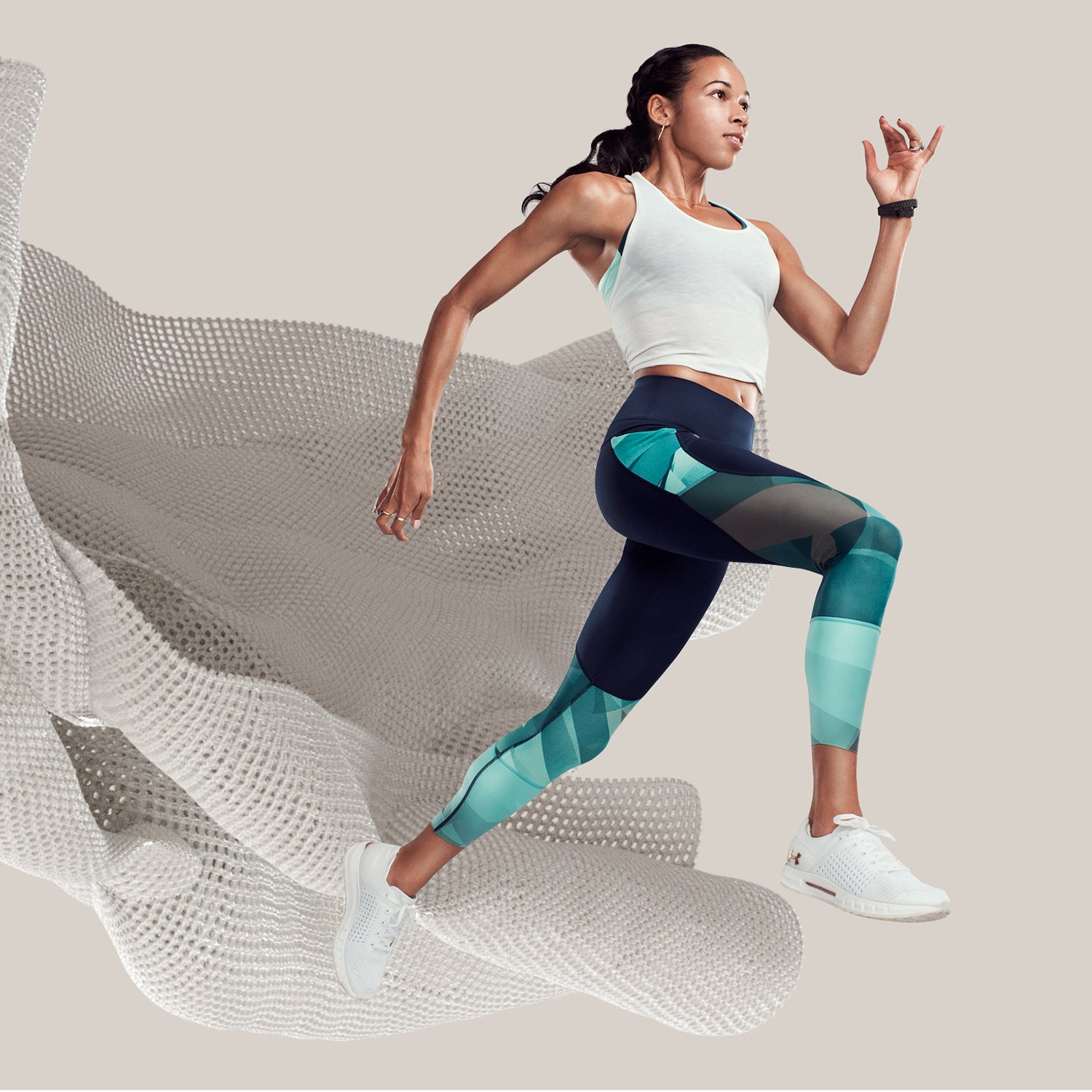Not too long ago, it felt like the sun was setting for cushioned running shoes. In 2009, following the example of Christopher McDougall and his barefoot-running manifesto, Born to Run, devotees were debating whether to purchase a pair of Vibram FiveFingers or just be a full-on savage and go from the ankles down. Foam was for chumps.
Things have changed. It turned out FiveFingers weren’t a panacea for everyone’s running woes after all. Soon, the pendulum was swinging the other way. Hoka One One lead the charge with its bloated shoes. Last year, as part of its effort to back a sub-two-hour marathon attempt, Nike released the Zoom Vaporfly 4%, a shoe with a tall 31-millimeter heel stack height that contradicted the very idea of a racing “flat.” Despite its robust appearance, the Vaporfly 4% weighed only 6.5 ounces, placing it well within the range of a typical marathon racing shoe.
Just a few short years ago, foam was the enemy. Today, it’s being touted as a crucial ingredient to help elite runners achieve times that were once unthinkable.
What gives?
Well, the shoes, for one. The relative softness of a midsole cushioning system is a crucial factor for the concept of “energy return,” a phrase that has only recently entered the lexicon of running shoe efficacy. Energy return denotes the amount of energy that shoe is able to retain when force is exerted upon it by a runner’s stride. The ideal cushioning system, so the thinking goes, will provide a sweet spot between stiffness and compliance, creating a springboard effect to help drive forward momentum. (I think the scientific term for this is “bounciness.”) And some brands are tinkering with and tweaking the traditional midsole recipe to get that desired mix.
Anyway, in light of this foam renaissance, I tested three different running shoes that all make bold claims about their respective cushioning systems: the , the , and the .
The Shoes

Brooks Levitate
Heel Height: 26mm
Forefoot Height: 18mm
Drop: 8mm
Weight: 11.2 ounces
Price: $150
The Foam Lowdown
For the , Brooks enlisted the help of chemical company , which sneaker aficionados might recognize as the company behind Adidas’ lauded Boost foam. Like Boost, the Levitate eschews the traditional ethylene-vinyl acetate (EVA) foam in favor of springier polyurethane (PU), which is encased in a thin of layer of thermoplastic polyurethane (TPU) to prevent it from compressing and losing its cushioning. Brooks has dubbed this its “DNA AMP” midsole.
The Energy-Return Claim
“A shoe engineered to provide the most energy return of leading performance running shoes…the foundation of DNA AMP is a PU foam that naturally expands, returning energy as force is applied.”

Nike Epic React Flyknit
Heel Height: 27mm
Forefoot Height: 18mm
Drop: 9mm
Weight: 8.45 ounces
Price: $150
The Foam Lowdown
The incorporates Nike’s new Epic React foam. A non-EVA material, this foam has a synthetic rubber as its primary ingredient and shares the light, soft, and responsive qualities of its ZoomX predecessor, adding an element of durability.
The Energy-Return Claim
“Nike React foam gives 13 percent greater energy return than Nike Lunar foam, while still delivering a soft and snappy ride.”

Under Armour HOVR Sonic
Heel Height: 21mm
Forefoot Height: 13mm
Drop: 8mm
Weight: 9.6 ounces
Price: $100
The Foam Lowdown
The foam compound at the heart of the midsole was developed in partnership with , using a proprietary blend (neither EVA nor PU) to create a material that Dow has dubbed . To maximize energy return, the HOVR foam system is encased in a webby mesh fabric.
The Energy-Return Claim
“The UA HOVR foam chemistry has a super-soft durometer that is contained by the UA Energy Web for ultimate energy return and responsiveness.”
The Test
I should mention at the outset that running shoes are a matter of individual preference. Whether a shoe works for you will depend on a number of subjective factors, including your gait, the shape of your foot, and how much cushioning you need. (For what it’s worth, ��’m an unapologetic heel-striking, neutral pronator who wears a regular—as opposed to wide—shoe.) This makes testing running shoes fundamentally different than testing, say, the thermoregulatory capabilities of different canteens, where an objective metric can be more easily applied. The running style of the wearer will always be the most significant variable in any running shoe test.
That said, when trying to compare the cushioning systems of various shoe models, an additional challenge arises: No cushioning system exists in isolation. If one really wanted to perform a test to assess only which shoe’s foam provides the best energy return, one would have to devise a way to neutralize all the other components of the shoe, like upper construction, weight, etc.
have taken great pains to mitigate such variables by subjecting shoes to mechanical testing methods in a lab. While impressive, it’s debatable how useful this information is for the everyday runner. After all, what matters most is how a cushioning system works in combination with all other aspects of a shoe.
With that in mind, I ran in the three shoes listed here at three different paces on three different surfaces. Rather than trying to come up with a definitive ranking (as in: “buy this shoe, not that one”), the idea was to determine which shoe was best suited for which activity.
The Speed Test
For this test, I ran two sets of 800 meters (two laps) in each pair of shoes around a rubberized outdoor track. I wanted a pace that, while significantly quicker than my marathon tempo, would still feel comfortable enough that I wouldn’t have to strain too hard to run even splits. I settled on 2 minutes 40 seconds for each interval.
Winner: Nike
No big surprise here. With a weight of only 8.45 ounces, the Nike Epic React had the clear edge for this test, and overall, hitting my goal pace felt the most effortless when I wore these shoes. (Anticipating this, I made sure to run in the Nike shoes last, figuring it was only fair to run in the lightest shoes when my legs would be least fresh.) The 27-millimeter heel height was also a factor. I tend to run more up on my forefoot when ��’m running short, fast stuff, and the Epic React gives you a noticeable, if slight, forward lean.
This is not to say that I couldn’t crank out decent 800s in the other two pairs of shoes, but both felt heavier on my feet. While I was expecting this from the Brooks Levitate, the Under Armour HOVR Sonic had a listed weight of only 9.6 ounces, which is almost racing-flat territory. When I went home and put the HOVR on the kitchen scale, my men’s size 10.5 shoe came in at 11.2 ounces. (Granted, the listed size is usually a men’s size 9 or 10, but this discrepancy shouldn’t manifest itself in an additional 1.6 ounces; both the other shoes were within a half-ounce of their listed weight when I weighed them on the scale.)
The Comfort Test
Recovery and easy runs are a crucial part of any runner’s routine, so I wanted to incorporate that into this test. I ran the same paved eight-mile course in each pair of shoes, going at a leisurely pace, between eight and 8.5 minutes per mile.
Winner: Brooks
While the Brooks Levitate is, for my taste at least, a little too soft for more aggressive runs, I loved this shoe for a recovery day semi-jog. Of the three models on this list, the cushioning in the Levitate is the most noticeable to the wearer: There’s a discernable squish from the very first step, but still enough firmness to provide that elusive “snappy ride,” to borrow the most overused of all running shoe descriptors. For a luxurious amble of a run, the Brooks Levitate is your shoe.
Overall, the Under Armour HOVR Sonic felt rather firm for easy running (although I appreciated the way the shoe’s meshy sock liner encased my foot), while jogging in the Nike Epic React feels somehow off, like you’re idling through a school zone in a Lamborghini.
The Consistency Test
��’m not big on treadmills, but one advantage they offer is that they make it very easy to standardize testing conditions. I ran for 20 minutes in each pair at a 7:30 pace and a 1 percent incline. For me, this pace represents a moderate effort—not hard, but also not entirely relaxed.
Winner: Nike
Once again, I made sure to run in the Epic React last, and once again, these shoes provided the most effortless ride when the pace picked up. The extreme monotony of the treadmill experience can help you notice things you wouldn’t necessarily when running outside. Hence, this test amplified the characteristics of each shoe; the Brooks Levitate felt extra soft, while the Under Armour HOVR felt noticeably firm.
What it came down to was this: Despite each company making big claims on the energy-return front, the Nike model was the only one that gave me some palpable sense of flinging forward as I ran. Again, this sensation of bounciness could very likely just be due to the Epic React’s stack height or that it’s more than two ounces lighter than the other two models, as opposed to being the consequence of some magical property of the React foam. But of course the very fact that the shoe can simultaneously be so light and so cushioned is part of what makes the cushioning system so impressive.
The Takeaway
I have to hand it to Nike. While I hate to be a cheerleader for the big dog on the running shoe scene, one should give credit where it’s due. The Epic React is a marvel, both from an aesthetic and functionality standpoint and, unlike the bank-breaking Vaporfly 4%, is reasonably priced at $150.
I haven’t run in the Epic React long enough to say much about its durability claims, but I think this shoe is going to be a trendsetter. Going forward, there will be increasing pressure on top brands to find a way to provide wearers with shoes that manage to add cushioning while reducing overall weight. Not easy, but I think the Swoosh lords have thrown down the gauntlet this time.


